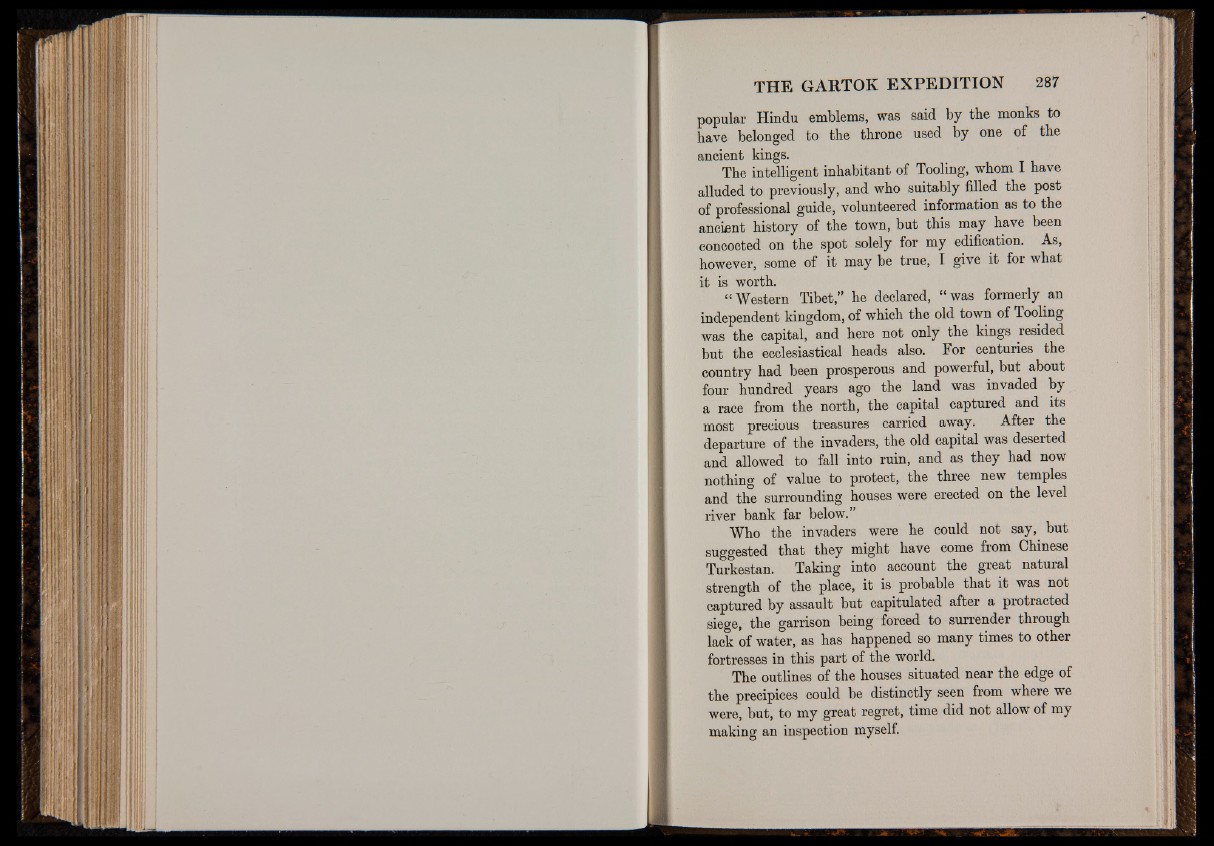
popular Hindu emblems, was said by the monks to
have belonged to the throne used by one of the
ancient kings.
The intelligent inhabitant of Tooling, whom I have
alluded to previously, and who suitably filled the post
of professional guide, volunteered information as to the
ancient history of the town, but this may have been
concocted on the spot solely for my edification. As,
however, some of it may be true, I give it for what
it is worth.
“Western Tibet,” he declared, “ was formerly an
independent kingdom, of which the old town of Tooling
was the capital, and here not only the kings resided
but the ecclesiastical heads also. For centuries the
country had been prosperous and powerful, but about
four hundred years ago the land was invaded by
a race from the north, the capital captured and its
most precious treasures carried away. After the
departure of the invaders, the old capital was deserted
and allowed to fall into ruin, and as they had now
nothing of value to protect, the three new temples
and the surrounding houses were erected on the level
river bank far below.”
Who the invaders were he could not say, but
suggested that they might have come from Chinese
Turkestan. Taking into account the great natural
strength of the place, it is probable that it was not
captured by assault but capitulated after a protracted
siege, the garrison being forced to surrender through
lack of water, as has happened so many times to other
fortresses in this part of the world.
The outlines of the houses situated near the edge of
the precipices could be distinctly seen from where we
were, but, to my great regret, time did not allow of my
making an inspection myself.